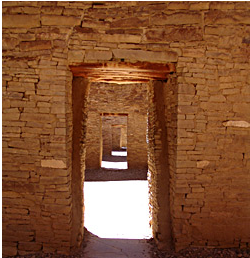Publication Date
5-1-2018
Abstract
The site of Midnight Terror Cave is located in the karstic Roaring Creek Valley near the village of Springfield in the Cayo District of Belize. The site was discovered in 2006 and fieldwork was conducted by the Western Belize Regional Cave Survey Project and California State University, Los Angeles, between 2008 and 2010. This dissertation focuses on the osteological analysis of the bones of 118 individuals recovered and recorded at the site. The osteological, contextual, and demographic evidence is framed within ritual and costly signaling theory of structural violence and viewed with the ethnohistoric and ethnographic literature of the ancient and modern Maya in mind. Analyses of the data indicate that the site’s remains constitute the largest assemblage of probably sacrificed individuals in the Southern Maya Lowlands, and that these sacrifices may have coincided with the Terminal Classic droughts. Demographic analysis indicates that the mortuary assemblage is significantly different from what would be expected for a “normal” cemetery assemblage of a horticultural society. The large quantities of older children and young adults apparently sacrificed in this cave suggest that these may have been petitions to the Maya rain deity. Isotopic data and paleopathology evidence suggest that geographical outsiders and possible social outcasts were at least sometimes chosen for sacrifice.
Keywords
Maya, Cave Archaeology, Bioarchaeology, Sacrifice, Isotope, Paleodemography
Document Type
Dissertation
Language
English
Degree Name
Anthropology
Level of Degree
Doctoral
Department Name
Anthropology
First Committee Member (Chair)
Loa Traxler
Second Committee Member
Lawrence Straus
Third Committee Member
Wirt H. Wills
Fourth Committee Member
Marisol Cortes-Rincon
Recommended Citation
Nail, C. L. Kieffer. "The Structural Violence of Maya Sacrifice: A Case Study of Ritualized Human Sacrifice at Midnight Terror Cave, Belize." (2018). https://digitalrepository.unm.edu/anth_etds/145


Comments
Pages 118-120 in this text contain images of human remains and have not been digitized in the interest of respecting cultural sensitivity. Contact UNM's Digital Initiatives and Scholarly Communications (DISC) Department for options on viewing the removed pages or refer to the physical copy.